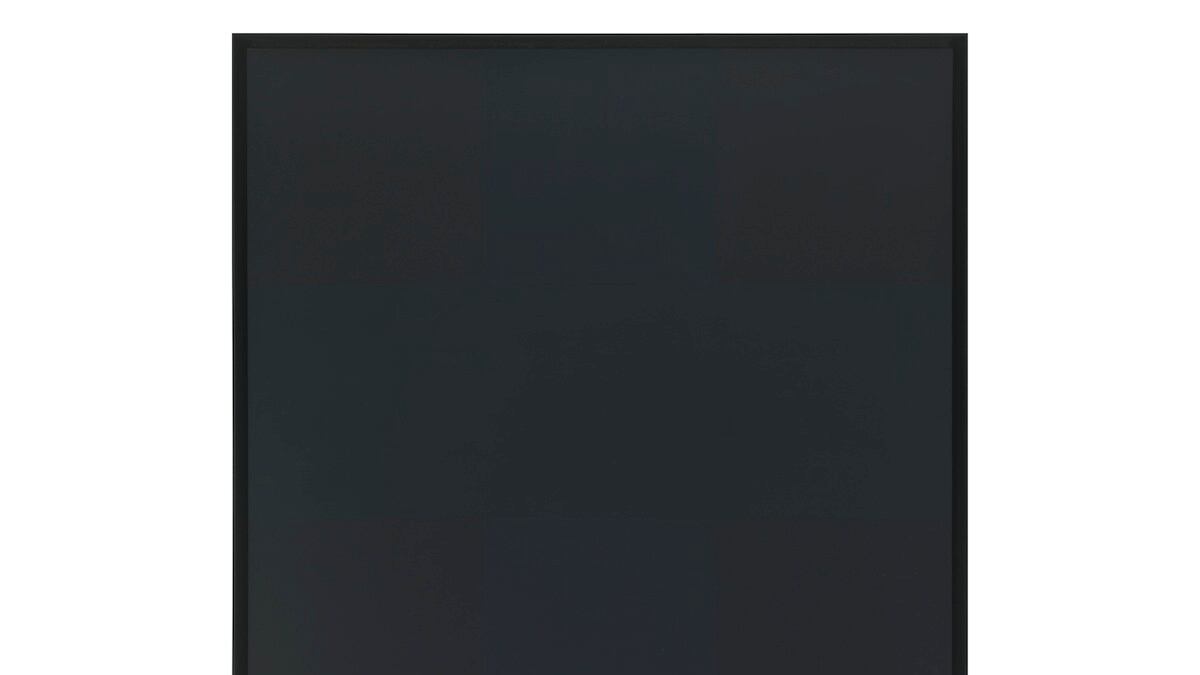
The last in a week of 1960s Black Paintings by Ad Reinhardt, inspired by the show now at David Zwirner in New York. As I hope has been clear from the images (if not the texts) of my weeklong celebration, Reinhardt’s paintings are, among other things, gorgeous to look at. Arrayed in orderly series around one of Zwirner’s deluxe white-walled spaces, they are all you could ask for in elegance and grace. I can’t imagine any lofty condo that wouldn’t look better with two or three on the walls. And that’s one of the pitfalls of these pictures, and of pictures in a similarly “spiritual” vein by the likes of Rothko and Agnes Martin: Their artistic substance can easily sublimate into stylish but vaporous design. Reinhardt’s black-on-black paintings often seem to slide into the same register as the lovely black-on-black crepes of a classic Armani suit – but without the extra heft that function always lends to fashion.
That’s why I’ve spent this week stressing the conceptual side of Reinhardt. If we imagine his paintings as both beautiful, visually, and more than a bit absurd, conceptually, I think that can keep them, and us, a bit off-balance, as the Black Paintings and their viewers must have been in the 1960s.
One art historian I know took exception to the way I’ve been implying that Duchampian art (and therefore what I’m claiming as its Reinhardtian progeny) is made up of immaterial and un-visual, or even anti-visual, gestures. He’s pointed out that the specifics of what a readymade is – the shape and size and nature of the object the artist selects – mattered to Duchamp, and ought to matter to us. I completely agree: I’ve written about how, to understand Duchamp’s “Fountain”, we need to understand the original meanings of porcelain urinals, which came closer to being deluxe than abject or common. But I still think that what Duchamp made clear is that such readings are destabilized – made richer than the usual propellers-are-beautiful line – when the objects we are reading also seem absurd and almost arbitrary. When we believe that Duchamp might as easily have chosen another piece of plumbing (but didn’t) and when we imagine that Reinhardt could have juggled different blacks (but didn’t), we are made to look and think longer and deeper. Reinhardt’s surfaces are stunning, but they’re better for the guffaw underneath. (Whitney Museum of American Art, New York, purchase, with funds from The Lauder Foundation, Leonard and Evelyn Lauder Fund, ©2013 Estate of Ad Reinhardt/Artists Rights Society (ARS), New York; courtesy David Zwirner, New York/London)
For a full visual survey of past Daily Pics visit blakegopnik.com/archive.






